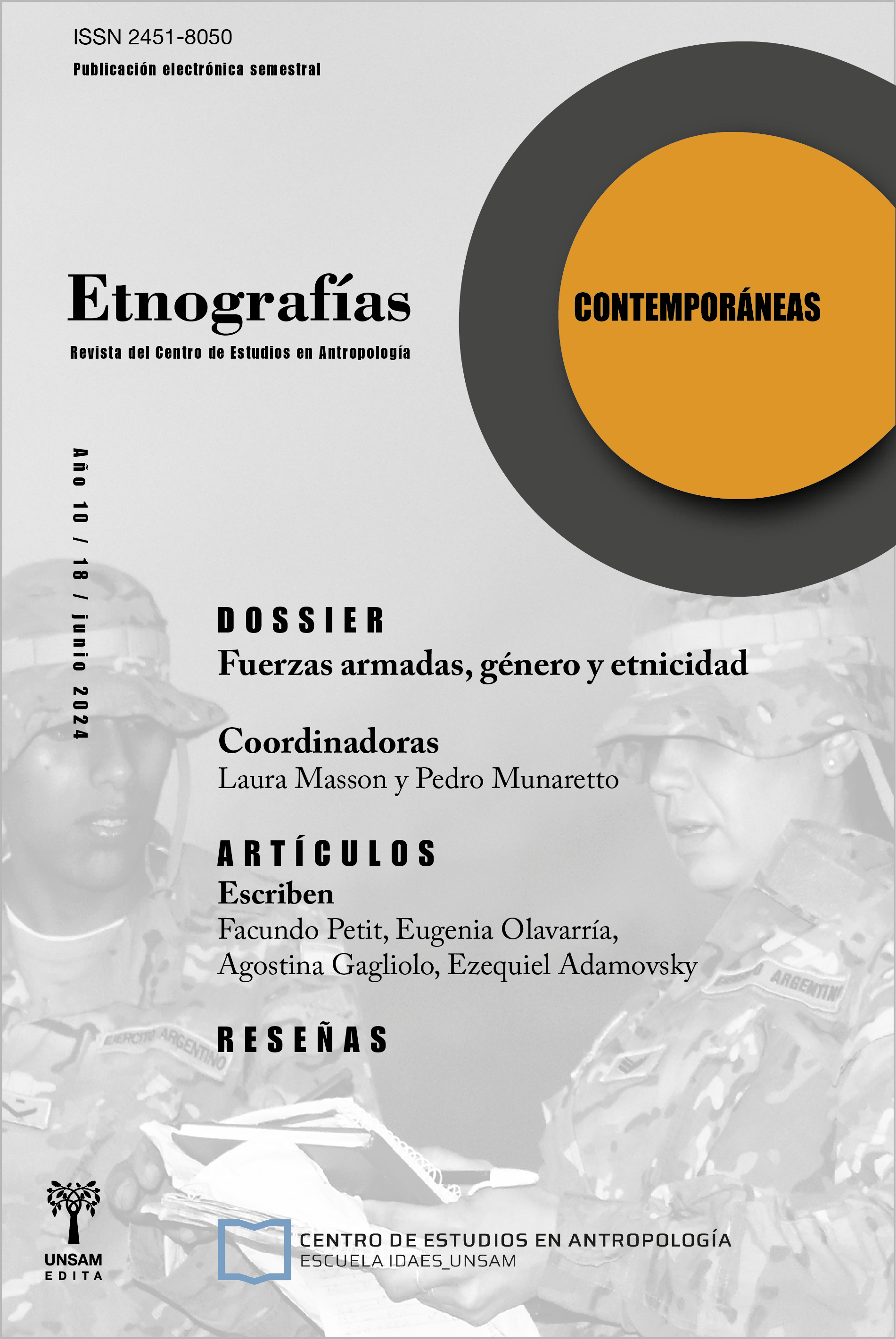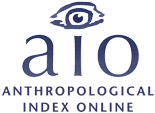Becoming-with-HIV: an embodied history of the HIV/AIDS epidemic in Argentina
Keywords:
public health, global policies, treatment as prevention, HIV/AIDSAbstract
Based on ethnographic research carried out in a Primary Care Center in the Buenos Aires Metropolitan Area (Argentina) this article addresses the human and non-human entanglements articulated in the production of a body-with-HIV. Recovering the temporality of a life story, it traces an embodied history of the epidemic through the narrative of a person with HIV who has been undergoing treatment for more than 20 years. Narratives are understood here as semantic units in which actions, episodes and segments of life unfold, as the product of encounters, conversations and interviews produced throughout fieldwork. In this framework, the ways in which political and technological transformations, diseases, viruses, treatments and medical and pharmacological interventions are articulated in a locally situated becoming-with-HIV are analyzed.
References
Aggleton, P., y Parker, R. (2015). Moving beyond biomedicalization in the HIV response: Implications for community involvement and community leadership among men who have sex with men and transgender people. American Journal of Public Health, 105(8), 1552–1558. https://doi.org/10.2105/AJPH.2015.302614
Alves, P. C. (2014). Narrativas de itinerários terapeuticos e doenças crônicas. 29a Reunião Brasileira de Antropologia, 1–14.
Bär, N. (2013). Julio Montaner: “Hoy podemos decir que el fin de la epidemia de sida ya comenzó”. La Nación. 13 de Junio de 2013.
Barad, K. (1998). Getting Real: Technoscientific Practices and the Materialization of Reality. Differences: A Journal of Feminist Cultural Studies (Vol. 10, Número 2), 87-128.
Barad, K. (2007a). Agential Realism : How Material-Discursive Practices Matter. En Meeting the Universe Halfway: Quantum Physics and the Entanglement of Matter and Meaning. Duke University Press.
Barad, K. (2007b). Meeting the universe halfway: quantum physics and the entanglement of matter and meaning. Duke University Press.
Barber, N. (2015). Experiencias de enfermedad y procesos de constitución de subjetividades. Tesis doctoral. Universidad de Buenos Aires.
Brives, C. (2018). From fighting against to becoming with: Viruses as companion species. En Hybrid Communities: Biosocial Approaches to Domestication and Other Trans-species Relationships (pp. 115–126). https://doi.org/10.4324/9781351717984
Brives, C., Le Marcis, F., y Sanabria, E. (2016). What’s in a Context? Tenses and Tensions in Evidence-Based Medicine. Medical Anthropology: Cross Cultural Studies in Health and Illness, 35(5), 369–376. https://doi.org/10.1080/01459740.2016.1160089
Bury, M. (1993). Managing Life with a Chronic Condition: The Story of Normalization. Qualitative Health Research, 3(1), 6–28. https://doi.org/10.1177/104973239300300102
CDC. (2020). Treatment, care and prevention for people with HIV. https://www.cdc.gov/hiv/clinicians/treatment/treatment-clinicians.html
Chen, M. Y. (2011). Toxic animacies, inanimat e affections. GLQ: A Journal of Lesbian and Gay Studies, 17(2–3), 265–286. https://doi.org/10.1215/10642684-1163400
Csordas, T. J. (1990). Embodiment as a Paradigm for Anthropology. Ethos, 18(1), 5–47. https://doi.org/10.1525/eth.1990.18.1.02a00010
Csordas, T. J. (1993). Somatic Modes of Attention. Cultural Anthropology, 8(2), 135–156. https://doi.org/10.1525/can.1993.8.2.02a00010
Csordas, T. J. (2002). Body / Meaning / Healing. Contemporary Anthropology of Religion Series. Springer.
Cueto, M. (2001). Culpa y Coraje : Historia de las Políticas sobre el VIH / Sida en el Perú. Consorcio de Investigación Económica y Social/Universidad Peruana Cayetano Heredia.
Cunha, C. C. da. (2012). Os muitos reveses de uma “sexualidade soropositiva”: o caso dos jovens vivendo com HIV/AIDS. Sexualidad, Salud y Sociedad (Rio de Janeiro), 0(10), 70–99. https://doi.org/10.1590/s1984-64872012000400004
DRVIHVYT. (2020). Respuesta al VIH y las ITS en la Argentina. https://bancos.salud.gob.ar/recurso/boletin-sobre-el-vih-sida-e-its-en-la-argentina-ndeg-37
DRVIHVYT. (2021). Boletin 38 de Respuesta al VIH y las ITS en la Argentina. En Diciembre. https://bancos.salud.gob.ar/recurso/boletin-sobre-el-vih-sida-e-its-en-la-argentina-ndeg-37
DSETSHyT. (2019). “I=I / Indetectable=Intransmisible: Ausencia de transmisión sexual del VIH en personas bajo tratamiento antirretroviral y con carga viral indetectable”. En Documento de consenso de la Dirección de Sida, ETS, Hepatitis y TBC.
DSyETS. (2015). Respuesta del Estado al VIH-Sida, ITS y hepatitis virales en la Argentina. Ministerio de Salud de la Nación, Dirección de Sida y ETS.
Farmer, P., Kim, J. Y., Kleinman, A., y Basilico, M. (2013). Reimagining Global Health: An Introduction. University of California Press.
Fassin, D. (2007). When Bodies Remember: Experiences and Politics of AIDS in South Africa. California Series in Public Anthropology. University of California Press.
Gadamer, H.-G., Agud Aparicio, A., y de Agapito, R. (1999). Verdad y Método I. Hermeneia.
Gagliolo, A. A. (2023). Ante el “ fin del VIH / Sida ”: una etnografía sobre respuestas locales a la epidemia y la experiencia de personas en tratamientos de larga duración. Tesis doctoral. Universidad de Buenos Aires.
Greene, J. A. (2014). Generic: The Unbranding of Modern Medicine -. Johns Hopkins University Press. https://doi.org/10.1111/1600-0498.12087
Grondin, J. (2008). Hans-Georg Gadamer: una hermenéutica del acontecer de la comprensión. En Grondin, Jean (2008)¿ Qué es la hermenéutica?. Herder.
Hacking, I. (2012). The looping effects of human kinds. En D. Sperber, D. Premack, y A. James Premack (Eds.), Causal Cognition: A Multidisciplinary Debate (p. 44). Oxford Scholarship Online. https://doi.org/10.1093/acprof:oso/9780198524021.001.0001
Hull, M. W., y Montaner, J. (2013). HIV treatment as prevention: The key to an AIDS-free generation. Journal of Food and Drug Analysis, 21(4 SUPPL.). https://doi.org/10.1016/j.jfda.2013.09.043
Ingold, T. (2000). The perception of environment: essays on livelihood, dwelling and skill. https://doi.org/10.4324/9780203466025-18
Ingold, T. (2015). Desde La Complementariedad a La Obviación: Sobre La Disolución De Los Límites Entre La Antropología Social, Biológica, Arqueología Y Psicología. Avá. Revista de Antropología, 26, 12–51.
Ingold, T., y Palsson, G. (2013). Biosocial Becomings: integration social and biological anthropology. Cambridge University Press.
Johnston, D., Deane, K., y Rizzo, M. (2015). The political economy of HIV. Review of African Political Economy, 42(145), 335–341. https://doi.org/10.1080/03056244.2015.1065603
Kenworthy, N., Thomann, M., y Parker, R. (2018a). Critical perspectives on the ‘end of AIDS’. Global Public Health, 13(8), 957–959. https://doi.org/10.1080/17441692.2018.1464589
Kenworthy, N., Thomann, M., y Parker, R. (2018b). From a global crisis to the ‘end of AIDS’: New epidemics of signification. Global Public Health, 13(8), 960– 971. https://doi.org/10.1080/17441692.2017.1365373
Lambert, H., y McKevitt, C. (2002). Anthropology in health research: From qualitative methods to multidisciplinarity. British Medical Journal, 325(7357), 210–213. https://doi.org/10.1136/bmj.325.7357.210
Lavadenz, F., Pantanali, C., y Zeballos, E. (2015). Treinta años de la epidemia de VIH/SIDA en la Argentina: Una Evaluación de la Respuesta Nacional (Direccione). Banco Mundial. http://dx.doi.org/10.1596/978-1-4648-0596-7
Manderson, L., y Smith-Morris, C. (2010). Chronic Conditions, Fluid States: Chronicity and the Anthropology of Illness. Rutgers University Press. https://www.jstor.org/stable/j.ctt5hj44p
Margulies, S., Barber, N., y Recoder, M. (2006). VIH - sida y “ adherencia ” al tratamiento Enfoques y perspectivas. Antipoda, 3(3), 281–300. https://doi.org/10.1080/09540120220123685
Margulies, S., y Gagliolo, A. A. (2020). “Te quedás indetectable”: devenir-es en el horizonte tecnocientífico del Tratamiento como Prevención. VI Congreso de la Asociación Latinoamericana de Antropología - Uruguay Mesa: Balance de cuatro décadas de epidemia de HIV/Sida: entre avances, retrocesos y perspectivas.
Melo, L. P. de. (2022). “a Minha Vida Foi Uma Diáspora Da Aids”: Memória, Testemunho E a Experiencia De Ser Mulher E Viver Com Hiv/Aids. Vivência: Revista de Antropologia, 1(60). https://doi.org/10.21680/2238-6009.2022v1n60id31083
Ministerio de Salud de la Nación. (2010). Políticas de Salud: Programa Médicos Comunitarios. Módulo 5. En Programa Médicos Comunitarios. Ministerio de Salud de la Nación. https://doi.org/10.1017/CBO9781107415324.004
Mol, A. (2002). The Body Multiple: Ontology in Medical Practice. Duke University Press. https://doi.org/10.1525/maq.2004.18.4.520
Mol, A., y Law, J. (2004). Embodied Action, Enacted Bodies Hypoglycaemia. Body & Society, 10(3), 43–62.
Montaner, J. (2011). Treatment as prevention — a double hat-trick. The Lancet, 378, 16–17. https://doi.org/10.1136/bmj.b1649.Kirk
Nelkin, D. (1991). AIDS and the News Media. The Milbank Quarterly, 69(2), 293–305. https://doi.org/10.4135/9781412971942.n261
O’Connell, G. (2020). Introduction: Framing ‘Post-AIDS’ and Global Health Discourses in 2015 and Beyond. Journal of Medical Humanities, 41(2), 89–94. https://doi.org/10.1007/s10912-017-9443-7
Persson, A. (2004). Incorporating Pharmakon: HIV, Medicine, and Body Shape Change. Body & Society, 10(4), 45–67. https://doi.org/10.1177/1357034X04047855
Persson, A. (2013). Non/infectious corporealities: Tensions in the biomedical era of “HIV normalisation”. Sociology of Health and Illness, 35(7), 1065–1079. https://doi.org/10.1111/1467-9566.12023
Persson, A., Kelly-Hanku, A., Bell, S., Mek, A., Worth, H., y Nake Trumb, R. (2019). “Vibrant Entanglements”: HIV Biomedicine and Serodiscordant Couples in Papua New Guinea. Medical Anthropology: Cross Cultural Studies in Health and Illness, 38(3), 267–281. https://doi.org/10.1080/01459740.2018.1530670
Persson, A., y Newman, C. (2006). Potency and vulnerability: Troubled “selves” in the context of antiretroviral therapy. Social Science and Medicine, 63(6), 1586–1596. https://doi.org/10.1016/j.socscimed.2006.04.001
Persson, A., Newman, C. E., Hopwood, M., Kidd, M. R., Canavan, P. G., Kippax, S. C., Reynolds, R. H., y De Wit, J. B. F. (2014). No ordinary mainstream illness: How HIV doctors perceive the virus. Qualitative Health Research, 24(1), 6–17. https://doi.org/10.1177/1049732313514139
Persson, A., Race, K., y Wakeford, E. (2003). HIV health in context: Negotiating medical technology and lived experience. Health: An Interdisciplinary Journal for the Social Study of Health, Illness and Medicine, 7(4), 397–415. a.persson@unsw. edu.au
Petryna, A. (2011). Experimentalidade: ciencia, capital e poder no mundo dos ensaios clínicos. Horizontes Antropológicos, 17(35), 127–160. https://doi.org/10.1590/S0104-71832011000100005
Ley Nacional de SIDA 23.798 y su decreto reglamentario 1244/91, (1990) (testimony of Poder Legislativo de la Nación Argentina).
LEY NACIONAL DE RESPUESTA INTEGRAL AL VIH, HEPATITIS VIRALES, OTRAS INFECCIONES DE TRANSMISIÓN SEXUAL -ITS- Y TUBERCULOSIS -TBC- Ley 27675, (2022) (testimony of Poder Legislativo de la Nación Argentina).
Rabelo, M. C., y Almeida Souza, I. M. de. (2003). Temporality and Experience. Ethnography, 4(3), 333–361. https://doi.org/10.1177/146613810343003
Rabelo, M. C., Alves, P. C., y Almeida Souza, I. M. de. (1999). Experiência de Doença e Narrativa (FIOCRUZ (ed.)). Editora Fiocruz. https://doi.org/10.1590/s1516-44462002000100015
Recoder, M. L. (2011). Vivir con VIH-sida: Notas etnográficas sobre el mundo de la enfermedad y sus cuidados. Editorial Biblos.
Ricoeur, P. (2004). Tiempo y narrativa. Siglo XXI.
Rosenbrock, R., Dubois-Arber, F., Moers, M., Pinell, P., Schaeffer, D., y Setbon, M. (2000). The normalization of AIDS in Western European countries. Social Science and Medicine. https://doi.org/10.1016/S0277-9536(99)00469-4
Squire, C. (2013). Living with HIV and ARVs: Three letter lives (1st Editio). Palgrave Macmillan UK. https://doi.org/10.1057/9781137313676
Treichler, P. (1987). AIDS , Homophobia , and Biomedical Discourse: An Epidemic of Signification *. AIDS: Cultural Analysis/Cultural Activism, 43(Winter), 31–70.
UNAIDS. (2022). IN DANGER: UNAIDS Global AIDS Update 2022.
Vaisman, N. (2013). Shedding our selves: perspectivism, the bounded subject and the nature-culture divide. En T. Ingold y G. Palsson (Eds.), Biosocial Becomings: integrating social and biological anthropology (pp. 116–121). Cambridge University Press.
Valle, C. G. do. (2018). Memórias, histórias e linguagens da dor e da luta no ativismo brasileiro de HIV/Aids. Sexualidad, Salud y Sociedad, 30, 153–182.
Vargha, D. (2016). After the End of Disease: Rethinking the Epidemic Narrative. Somatosphere, 2016, 1–4. http://somatosphere.net/2016/05/after-the-end-of-disease-rethinking-the-epidemic-narrative.html
Walker, L. (2020). Problematising the Discourse of ‘Post-AIDS’. Journal of Medical Humanities, 41(2), 95–105. https://doi.org/10.1007/s10912-017-9433-9
























